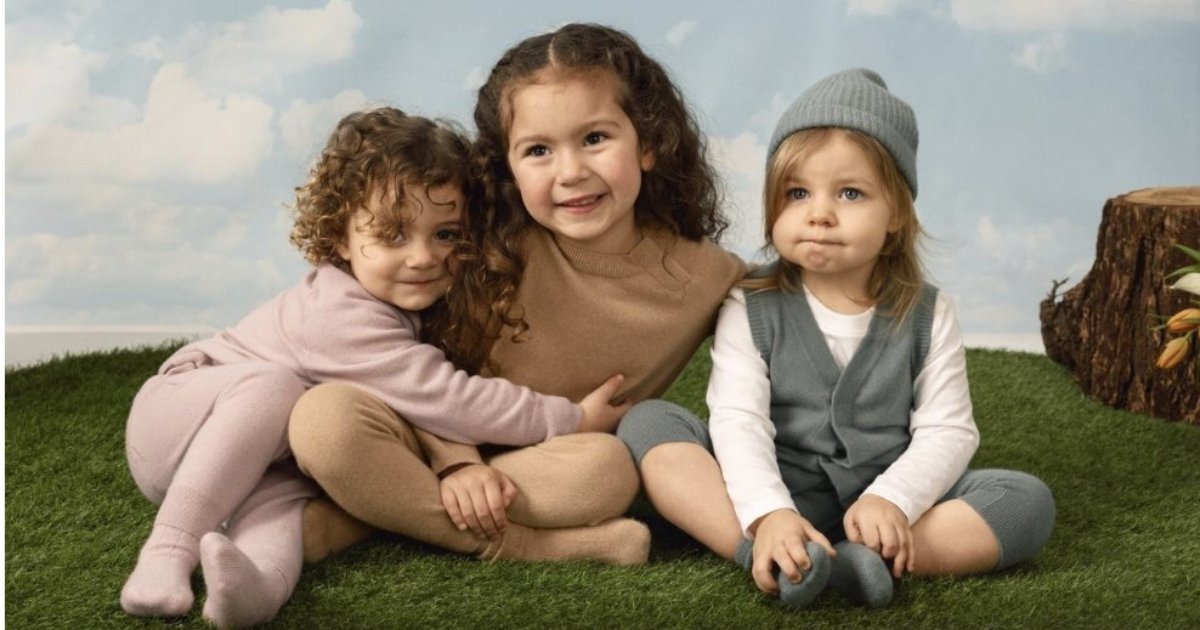Children’s Apparel Takes on a New Style

By Mark Seavy
Children’s apparel brands are increasingly aligning with their adult counterparts as sustainability and equity merge with lifestyles.
How those qualities are interpreted is open ended but, for new parents, an apparel brand’s focus on issues like sustainability, inclusivity, and mental health have joined quality and price as deciding factors when they purchase clothing for their children.
This balancing act has made entry into children’s apparel even more daunting. The category is already known for ever-changing and character-driven styles, seasonal collections, and a focus on brands that carry weight with adults.
The global children’s apparel market grew $228 billion in annual sales this year to $420 billion, according to Future Market Insights, and is forecast to increase 6.3% annually through 2035.
Haddad Brands, for example, is readying a Lacoste-branded children’s line (headwear hosiery, jeans, outerwear) to go with deals it already has for Nike, Converse, Tommy Hilfiger, and Calvin Klein. Nuna—best known for its high-end strollers, including a BMW-licensed model—meanwhile, launched online sales last week of a new apparel collection featuring mothers and children wearing matching one- and two-piece sets in cotton and cashmere along with socks, blankets, and a women’s cashmere coat priced at $900. The Nuna apparel will also launch online at Nordstrom’s this week to go with the strollers the 394-store chain already carries.
“The most resilient [children’s] properties are those that can move seamlessly across physical and digital worlds, while staying consistent in values,” Philippe Guinaudeau, CEO at the research firm BrandTrends Group, said in a blog post. “We’re witnessing a profound generational pivot. These parents are the first to have grown up fully immersed in digital culture. They’re fluent in platforms, in content creation, in interactivity. But more importantly—they are value-driven.”
Those values can be found in the materials used in children’s apparel, which often carry as much currency as the retail price. Supima, the marketing brand used by Pima cotton growers in the U.S., is frequently deployed in children’s apparel as are the various certifications like OEKO-TEX Standard 100, which verifies the apparel has passed safety tests for the presence of harmful substances. Supima is also governed by ethical and environmental standards.
“Success today is measured by connection, not just conversion,” Guinaudeau said. “The most powerful brands don’t just sell—they become part of the consumer’s identity. Whether that means an animated brand inspiring environmental stewardship or a video game IP creating intergenerational bonding moments, relevance is the currency.”
In a crowded market, where hundreds of children’s brands jockey for consumer attention, relevance can by key. For those looking to stand out in the children’s apparel landscape, it can be helpful to have a brand that is known and trusted in other categories.
For example, retailer The Children’s Place is launching a collection with the New York City Ballet inspired by George Balanchine’s The Nutcracker. The limited-edition holiday collection is being sold under the retailer’s Gymboree sub-brand (which it acquired in 2019) and features an embroidered nutcracker tutu dress and sweater along with flannel pajamas. The line comes as The Children’s Place leans heavily into licensing amid a reorganization that has taken the chain to 494 stores (down from 516 a year ago), said Muhammad Umair, President and interim CEO.
And the retailer Zara recently launched a Paddington collection as it sought to build out its children’s business. At the same time, Carter’s, which recently moved to close 150 locations, is phasing out its eight-year-old Simple Joys by Carter’s private label line it developed for Amazon, which is shifting focus to its Amazon Essentials children’s apparel. In doing so, Carter’s is sharpening focus on its namesake brand and OshKosh B’gosh labels, CEO Doug Palladini said.
Meeting young parents online where they consume content and shop is also crucial.
“I still see success with companies that come up with an idea or timeless design, but they have to do a lot more work to get visibility now because there is a lot of competition out there,” said Whitney Grant, Director of Apparel at Nuna. “Social media plays a huge role for apparel now. And it is a shifting world because there are not as many people shopping in stores and so much of the business is online.”




